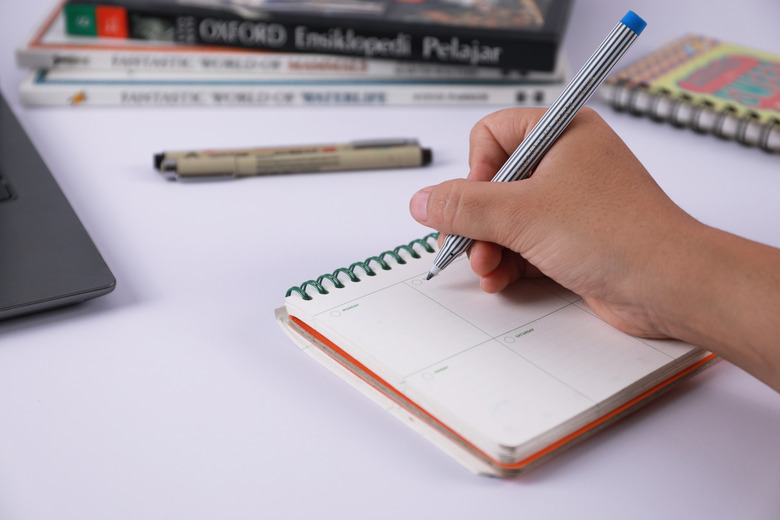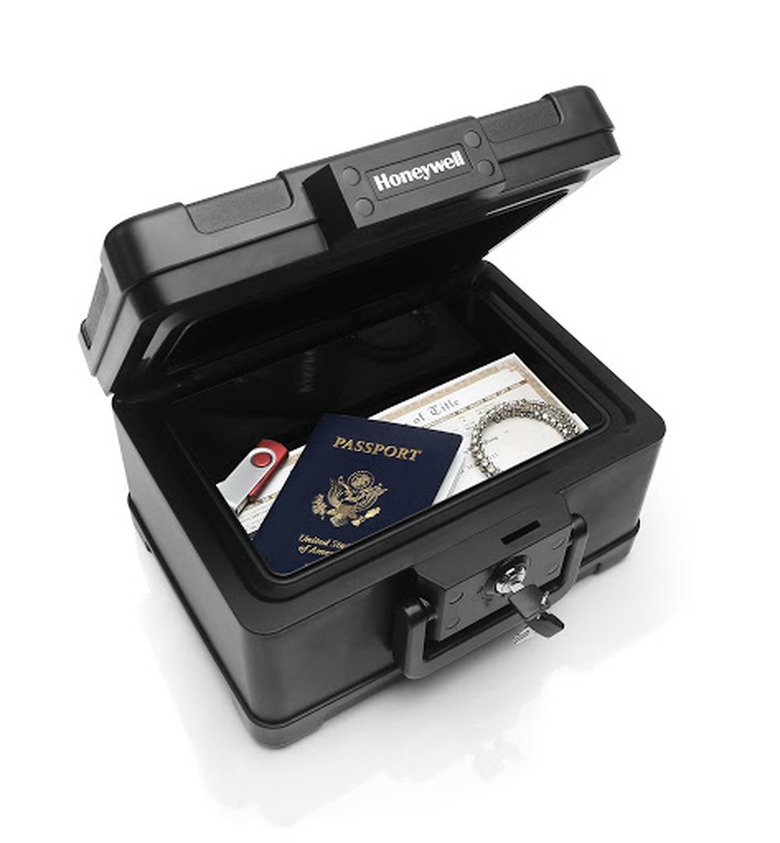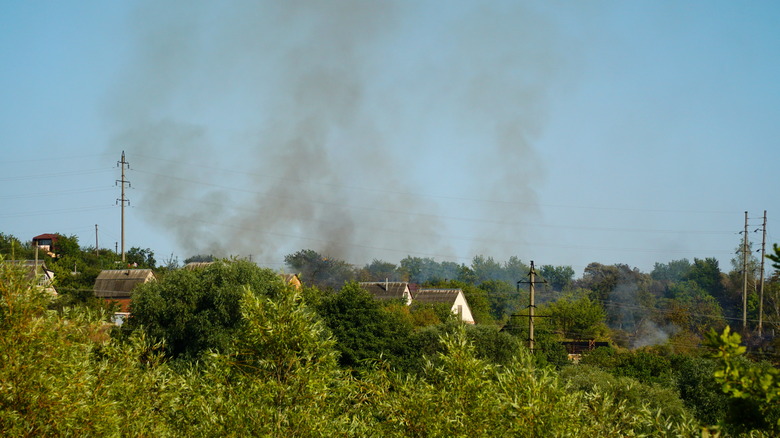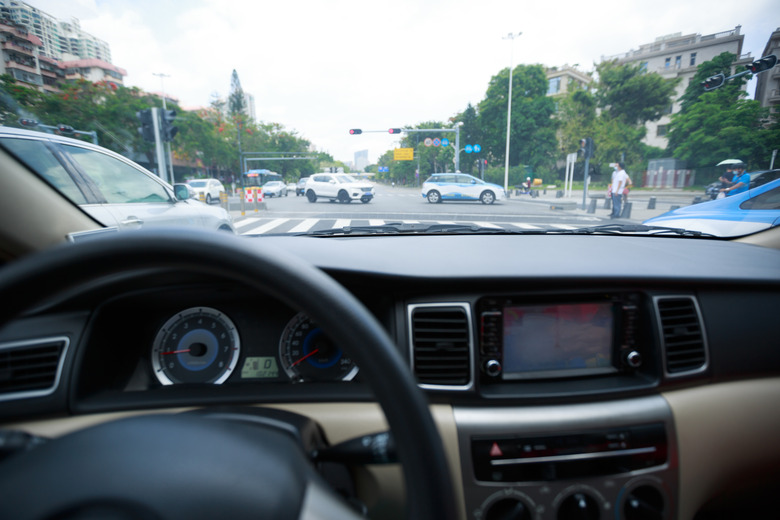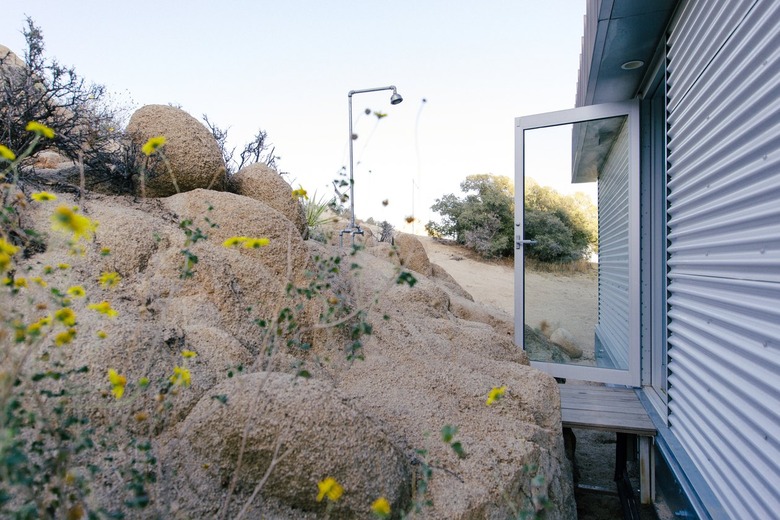10 Fire Season Tips You Really Need To Know
We're in the midst of fire season in the Western United States and other parts of the country, and being prepared for the drama and destruction it can bring is essential in order to keep you safe. There are some basic precautions that you may already know, such as clearing brush and trees around your home, having working fire alarms and extinguishers, and a stocked emergency kit or backpack in your home or car. Good job if you've checked those items off, but there are more ways to put your mind at ease. We turned to the Los Angeles Fire Department (LAFD), California Department of Forestry and Fire Protection (CAL FIRE) sites and spoke to veteran Southern California firefighter Lauren Andrade to develop these 10 tips to prepare for fire season that you may not have thought of.
1. Develop a plan-of-action list (or lists) that takes into account everyone in the household.
1. Develop a plan-of-action list (or lists) that takes into
account everyone in the household.
"If there's a huge plume of smoke that's blowing your way, you're not going to be thinking clearly and you will forget things," says Andrade, a fire captain in Orange County, CA, who has battled some of the biggest and most destructive wildfires in the area and is featured in Netflix's new Like a Mother web series. "The best thing that you can do to prepare for those moments is to have lists of things that you need to do."
LAFD suggests having an emergency supply kit for each member of the household, and CalFire has a Wildfire Action Plan with their checklist of "The Six P's" in case of an evacuation:
- People and pets
- Papers, phone numbers, and important
documents - Prescriptions, vitamins, and
eyeglasses - Pictures and irreplaceable
memorabilia - Personal computer hard drive and
disks - 'Plastic' (credit cards, ATM cards)
and cash
2. Put your important documents and treasured keepsakes in a fireproof lock box.
2. Put your important documents
and treasured keepsakes in a fireproof lock box.
Andrade: "Having important documents in a fireproof lock box is a good thing because if something does happen and you don't have time to grab that or whatever it is, it's fireproof...[such as] artwork from your kids, the truly irreplaceable personal things."
3. Practice packing up your car or other mode of transport in case of an evacuation — and photograph how you packed your items.
3. Practice packing up your car or other mode of transport in
case of an evacuation — and photograph how you packed your items.
You may have your emergency and treasured items ready to go in case of emergency, but practicing walking out the door is another task altogether. "Get them packed into your vehicle and do a dry run. How is it going to fit?" says Andrade. "Pack it and take a picture on your phone so that you already know how it's going to go just one time."
Speaking from my own experience of being evacuated from my home with little notice, and car access was blocked or limited, your mode of transport for your items may not be a car, it may be a pull cart, so having a back-up way to get you and your belongings out of harm's way is smart planning.
4. Pack something that brings you or your family member(s) comfort.
4. Pack something that brings you or your family member(s)
comfort.
If there are particular easy-to-carry items that can calm you or your family members during stressful times, add that to your evacuation list. For kids, Andrade suggests a favorite toy, a blanket, or even a pillow.
5. Plan potential personal evacuation/meet-up spots in advance and let your loved ones know.
5. Plan potential personal evacuation/meet-up spots in advance
and let your loved ones know.
Andrade: "You may not know where [official] evacuation spots are ahead of time. A lot of times they are pre-planned with your local fire department [if you want to inquire] ... so you have that meet-up spot and also have a contact that's out of state so there's somebody else who knows what's going on." She also recommends establishing your own possible meeting places. Perhaps you have a friend or family member who lives in another nearby neighborhood or city where you can agree to include on your list of evacuation spots to get out of danger.
6. Follow your local fire department's social media feeds or
subscribe to official alerts for reliable info.
What you see on live news or Twitter feeds may not provide full or accurate info in your area. A precautionary measure recommended by the LAFD's Ready, Set, Go! site is to sign up for alerts from their site or emergency alerts from the City of L.A. and to follow the LAFD Twitter feed. Follow suit by finding similar resources offered by your city and county and the local fire department.
7. Know your closest fire station and contact them for resources in your area now.
7. Know your closest fire station and contact them for resources
in your area now.
Andrade: "Everybody has their own system. The best way to get info is ahead of time based on the fire department that serves you. Call ahead of time and ask. Most departments have a fire prevention unit, and if there are resources like that, you can call some of them. That being said, [during an emergency] everybody is going to be calling them."
8. Establish a fire evacuation plan for your own home and alternative ways of leaving your neighborhood.
8. Establish a fire evacuation plan for your own home and alternative ways of
leaving your neighborhood.
Andrade: "The first 24, 48 hours is going to be the toughest ... if you're preparing to evacuate, you're going to hit traffic. You need to figure out a few ways out of your area. Right? Because generally what happens is those roads are going to be locked up with people."
9. Be mindful of weather that is conducive to fires, such as red flag warnings.
9. Be mindful of weather that is conducive to fires, such as red
flag warnings.
Andrade: "Even if you've prepared your home, the trees are cut down or there aren't lots of things that can burn close to your house, remember, there's going to be wind and the fire will create its own weather. People may think, 'Oh, there's the plume super far away,' but the reality is wind can go in all different types of directions. If it's super dry out and it's hot out, that's going to be more problematic. If there is low humidity and high winds, that's a problem. High winds, that's the problem, if any. A good indicator of fire danger is if you are watching the news and they say in three days, we're going to have Santa Ana winds. We may have a red flag warning. Those are all indications ahead of time."
10. Talk to those in your household and loved ones who reside in fire-prone areas about what you’ve learned to help them prepare too.
10. Talk to those in your household and loved ones who reside in fire-prone areas about what you've learned to help them prepare too.
You may not be reading this for just your sake but for loved ones who may be in areas that are prone to wildfires. And we all know loved ones who may be dismissive of such dangers, but having a dialog about such threats and, more importantly, helping prepare them for emergency situations are life-saving measures.
Andrade: "I think what's most important is having that talk, like everything is replaceable, but you — and you are the most important thing. Have those conversations about preparation of their homes, having that brush clearance, having some of those drought-tolerant plants, like ice plants, those green barriers around their home. I think just having that really candid conversation ahead of time and preparation are vital."
One last reminder: "Everything is replaceable but you," says Andrade, "undoubtedly human life is most important."
